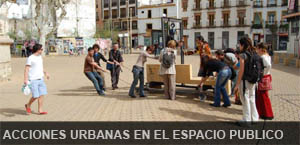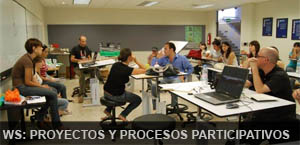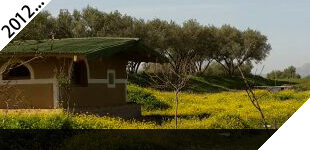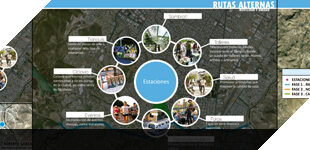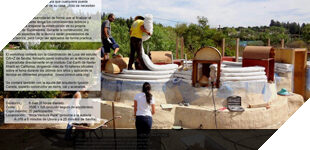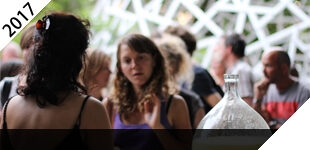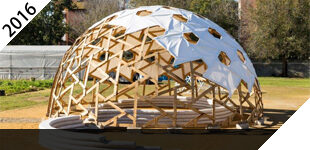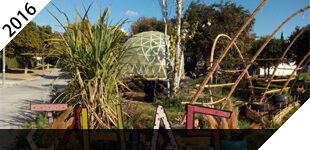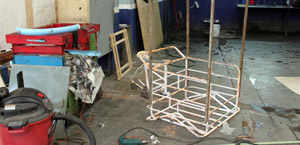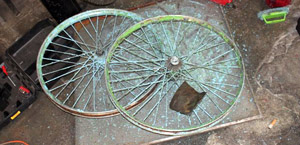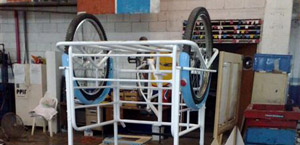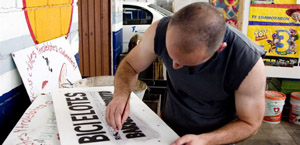>>>>>>>
Elote’s Bike – Neighborhood’s communication tool
ATTENTION: THIS PROJECT IS THE RESULT OF A COLLABORATIVE PROCESS BETWEEN CTRL+Z AND DIFFERENT ACTORS. TO UNDERSTAND IT CORRECTLY I INVITE YOU TO GET CLOSE TO THE OTHER DIRECTLY INVOLVED SUBJECTS: D1618 (BUDAPEST), EL NARVAL (TAMPIQUITO), TODO POR LA PRAXIS (MADRID).
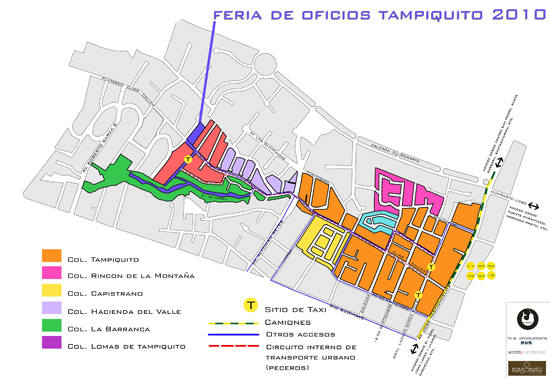 In November 2010 Ctrl+Z organized in collaboration with Straddle3 and the “Implan” of San Pedro the “neighborhood’s days” in Tampiquito, San Pedro Garza García in the state of Nuevo Leon in northern Mexico. Tampiquito is a humble neighborhood trapped between the rich and fenced neighborhoods of one of the wealthiest communities in Latin America, this doesn’t prevent it from being a neighborhood with a strong identity, sense of belonging and cultural and artistic dynamism. Still Tampiquito, with a population of about 1500 inhabitants, suffer some internal fragmentation between the upper and the lower part of the neighborhood that are divided into three shreds each. This causes a lack of understanding by the population of the socio-cultural activities that are develop in its various constituent parts.
In November 2010 Ctrl+Z organized in collaboration with Straddle3 and the “Implan” of San Pedro the “neighborhood’s days” in Tampiquito, San Pedro Garza García in the state of Nuevo Leon in northern Mexico. Tampiquito is a humble neighborhood trapped between the rich and fenced neighborhoods of one of the wealthiest communities in Latin America, this doesn’t prevent it from being a neighborhood with a strong identity, sense of belonging and cultural and artistic dynamism. Still Tampiquito, with a population of about 1500 inhabitants, suffer some internal fragmentation between the upper and the lower part of the neighborhood that are divided into three shreds each. This causes a lack of understanding by the population of the socio-cultural activities that are develop in its various constituent parts.
During those days we had the opportunity to get in touch with Luis Alvarez of the association “El Narval”, a well-organized neighbor who takes to heart the socio-cultural organization of the environment in which he lives. After the event, I kept in contact with Luis for the creation of new partnerships and we developed a specific project for an exhibition that never took place. Despite that, the experience was very useful to keep up the complicity and deepen the research of useful solutions for the neighborhood.
 The topics were generally related to urban decorum, internal transport made difficult by orography and lack of public service, but also focused on internal communication of the neighborhood with proposals such as street boards, loudspeakers activities, community’s mailboxes as well as tools for a better cultural development, such as a residence for artists that would allow to invite foreign artists to undertake activities without the cost of stay that in some cases prevents the collaboration.
The topics were generally related to urban decorum, internal transport made difficult by orography and lack of public service, but also focused on internal communication of the neighborhood with proposals such as street boards, loudspeakers activities, community’s mailboxes as well as tools for a better cultural development, such as a residence for artists that would allow to invite foreign artists to undertake activities without the cost of stay that in some cases prevents the collaboration.
In March 2011 parallel to the development of the proposals, Ctrl+Z is invited by the Cedim, an university of the nearby town of Santa Catalina, to propose a summer course for their students in the second half of June. Diego Peris of the collective Todoporlapraxis of Madrid is immediately contacted and checked his readiness to join the course with the aim to turn our stay in an occasion for the joint development of a real project in Tampiquito. In June D1618 of Budapest joined the expedition.
The first day of class we visited the neighborhood guided by Louis and we decided to focus the course on the park next to the medical center, in the area of “La Barranca”, with an intervention that improves the physical side,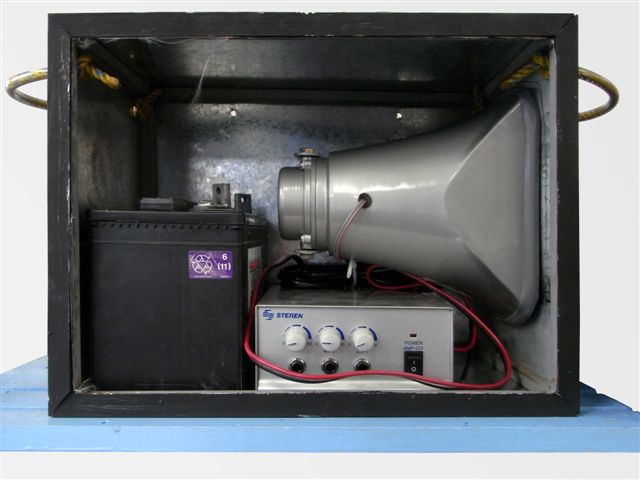 but also the mental aspect incorporating elements of identity of the place.
but also the mental aspect incorporating elements of identity of the place.
Same time we start working on a project that could attack some of the problems that were detected in the various meetings with local actors.
From the beginning Diego focused his attention at the vending carts that roam the neighborhood, and the streets of most of the country, and we began to study how to use those elements to influence the problems of lack of communication always referred even when discussing different themes.
It seemed an ideal mean to empower the community through information as they run through the different parts of the neighborhood several times a day for the sale of products that vary by season.
Thus we proposed the transformation of one of them, Bernardo’s “bici-elotes” , in a transceiver capable of 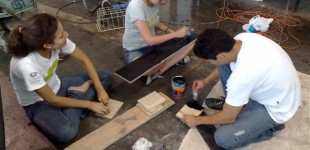 boosting Tampiquito cultural communication as a whole.
boosting Tampiquito cultural communication as a whole.
The reform project included a capsized during transport for a more rapid and effective removal of the existing roof. We carried out the mechanics maintenance work, the general painting, the replacement of the roof, which had stability problems, but overall the vending cart was equipped with a new spirit and different features incorporating an independent and removable megaphone system.
Some students of the course voluntarily engaged in this project, regardless of academic time frame, being helpful to the process.
During his journeys the cart will act as receptor of proposals and activities to be delivered by Bernardo to  the Narval’s headquarters to prepare a program that would be broadcast by the audio system in the following days.
the Narval’s headquarters to prepare a program that would be broadcast by the audio system in the following days.
Through the proposal we achieved to leave a tool available to “El Narval” and to all citizens and agents interested in promote cultural activities, through an equipment that is already moving naturally in the territory.
Working with individuals, elements and dynamics already present and active in the area, providing new means and possibilities without implying changes in lifestyle and tasks, was a conscious decision to boost the initiative to be a successful and lasting with the improvement of the initial situation of all involved parties.
We believe that the implementation of communication tools such as “bici-elote” can be a great starting point for any other activity that may take place in Tampiquito.


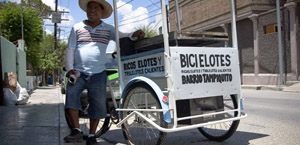
2015 Four years later
The death of Doña Martha, one of the of Tampiquito’s leaders, as well as other events, moved and redesigned the balances inside the neighborhood. Bernardo, finding a more stable and better paid job in a restaurant, left the street trading of the corn. He lived with his wife in a room rented from Doña Martha and now he lives down the neighborhood, meantime his first child was born. Bernardo’s father, Feliciano, is still in the corn business, but he uses its own tricycle. Luis is developing a residency abroad, the “bici-elote” is standing decoratively in the restaurant where now Bernardo is working.
All this shows how in urban enclaves like Tampiquito that are located and constitute at the same time “the frontier” between the planned and the spontaneous city, between the formal and the informal, between the “rich” and the “marginal” city, there are other codes, forms of association, communication and wealth.
Where institutions reach less efficiently, people of the same neighborhood take over and they are the ones who design the neighborhoods and their functioning that often develops in a parallel, complementary or independent way form the official urban policies. This creates an urban planning and a specific neighborhood policies for each community that, in the absence of other resources, are based on the people and their particular form of organization and work together.
In those communities that achieve that those dynamics configures under positive and productive schemes, awareness and neighborhood identity are created, providing it of a certain degree of resilience to the change of the citizens actors involved.
What elsewhere is being celebrated as a return to a more participatory urban planning, architecture and social structures, is, in neighborhoods like Tampiquito, a natural part of social life and of the neighborhood that has evolved and adapted to the different situations and subjects that have alternated inside it.
The “bici-elote” is a tool that remains in the neighborhood looking forward for new subjects that could make it their own and decide put it in value pulling it back to the streets for uses and functions that right now are not planeables or completely predictables as they’ll follow and adapt to the evolution of the neighborhood itself.
![]()
